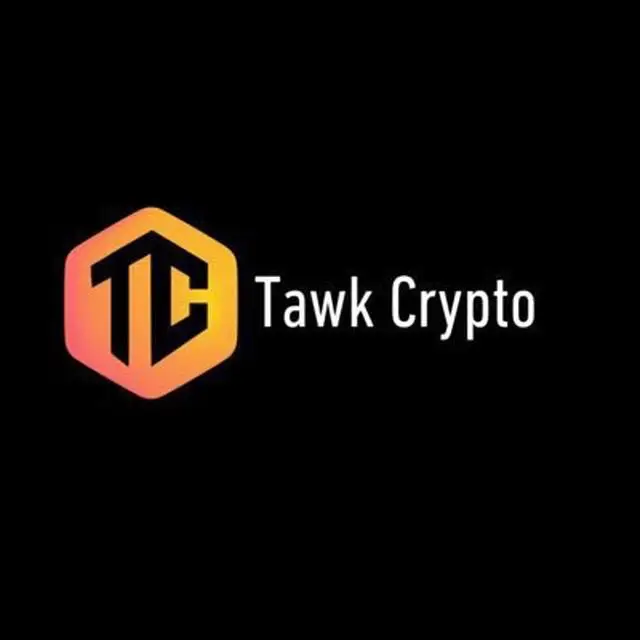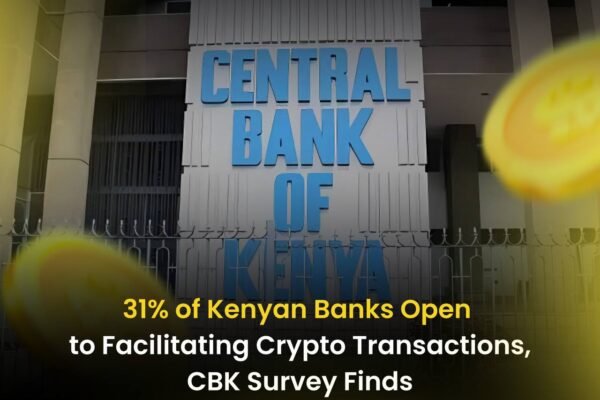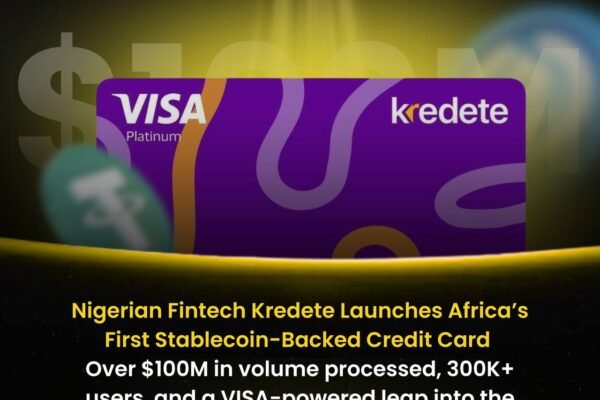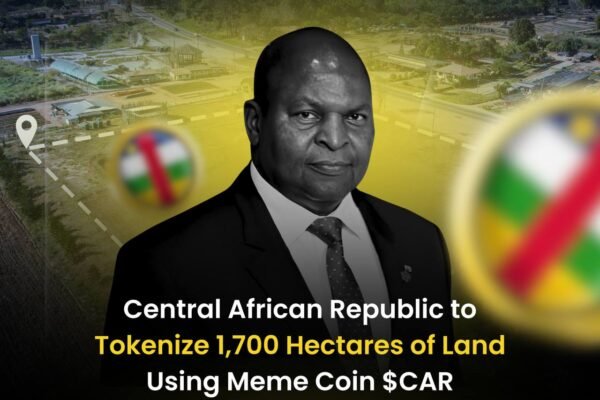

Decentralized Social Networks: How Web3 is Transforming Online Communities
Overview of Decentralized Social Networks
Imagine a world where your online identity, data, and content are entirely yours—where you’re not just another user generating ad revenue for a faceless corporation but a valued participant in a thriving digital ecosystem. That’s the promise of decentralized social networks. These platforms, built on blockchain technology, aim to flip the script of traditional social media by prioritizing user ownership, privacy, and freedom.
On platforms like Facebook, Instagram, or Twitter, you don’t really own your posts, followers, or even your identity. At any moment, a single decision by the platform—whether it’s to tweak an algorithm or enforce a policy—can change how you interact with your online world. Even worse, your data—from personal preferences to browsing habits—is often sold to advertisers without your explicit consent, turning you into the product.
Now, enter decentralized social networks. These platforms operate on distributed systems, meaning there’s no single point of control or failure. Instead of being hosted on central servers controlled by a corporation, they leverage blockchain’s power to ensure transparency, security, and autonomy. The result? A social media experience where you call the shots. You decide how your data is used, who can see your content, and how you interact with others—all without intermediaries dictating the rules. Pretty cool, right?
What’s even more exciting is how decentralized platforms are built to reward users and creators directly. Imagine earning tokens for your contributions to a community or being able to take your followers and content with you if you switch to a different platform. It’s like having your own personal internet passport, and the possibilities are endless.
In short, decentralized social networks aren’t just a tech trend—they’re a movement towards a fairer, more user-centric online world. So, let’s dive in and explore how these platforms are rewriting the rules of social media as we know it.
Why Decentralization Matters in Social Media
Let’s be real—traditional social media has its perks, but it also comes with some pretty big downsides. Platforms like Instagram and Twitter have essentially monopolized communication, becoming the ultimate gatekeepers of online discourse. Ever notice how an algorithm change can tank your post’s reach or how certain voices suddenly go silent? That’s algorithmic censorship at play. And let’s not even get started on how these companies mine, exploit, and sell your data to the highest bidder. It’s frustrating, right?
Decentralization changes the game by removing these powerful intermediaries. Instead of having a single entity dictating the rules, decentralized social networks empower users to take control of their interactions. Imagine a platform where no corporation can ban your account, tweak your visibility, or sell your data without your consent. That’s what decentralization brings to the table: freedom, privacy, and autonomy.
Here’s an example: On traditional platforms, creators often struggle to earn a fair share of the revenue their content generates. The platform takes a massive cut, leaving creators with crumbs. But on decentralized platforms, creators can monetize their content directly through tokens, NFTs, or peer-to-peer tipping—no middleman taking a slice. And the best part? You own your followers, your content, and even your revenue streams. It’s a system designed to benefit you, not some corporation.
The Role of Web3 in Shaping Online Communities
So, where does Web3 fit into all this? Think of Web3 as the superhero of the internet, armed with blockchain’s transparency, security, and decentralization. By integrating these principles into social media, Web3 introduces a whole new way of interacting online—one that’s censorship-resistant and privacy-focused.
Take Lens Protocol, for example. It’s not just a social media platform; it’s a decentralized ecosystem where your profile, posts, and followers are NFTs that you own. Want to switch to a new app? No problem—you can take your digital identity with you. This level of portability is unheard of in traditional social media.
Or look at Farcaster. It’s an open protocol that lets developers and users build and interact on equal terms. There’s no central authority deciding who gets to play or what the rules are. It’s like a giant digital playground where everyone gets a say.
Even Bluesky, backed by Jack Dorsey, is pushing for federated social media where different platforms can interconnect seamlessly. Imagine tweeting from one app and having it appear on another without needing to create multiple accounts. That’s the kind of interoperability Web3 makes possible.
And the benefits don’t stop there. Web3-based platforms allow communities to govern themselves through DAOs (Decentralized Autonomous Organizations). Think of a DAO as a digital co-op where members vote on everything from community guidelines to platform upgrades. It’s a level of democracy that’s sorely missing in traditional social media.
In a nutshell, Web3 isn’t just about decentralization—it’s about creating online communities that are fairer, more inclusive, and truly owned by the people who make them thrive. And that, my friends, is the future of social media.
The Problems with Traditional Social Networks
Centralized Control and Censorship
Have you ever posted something on social media only to see it disappear, get flagged, or buried under an algorithm? That’s centralized control in action. On platforms like Facebook, Twitter, and Instagram, a handful of executives and algorithms decide what content gets shared, amplified, or suppressed. While this might sometimes be necessary to combat harmful content, it also raises big questions about censorship and free speech.
Here’s a mind-blowing stat: In 2022 alone, Twitter suspended over 75,000 accounts for policy violations. While some of these actions were justified, many sparked heated debates about whether the platform was unfairly silencing certain voices. And let’s not forget the high-profile controversies where world leaders, journalists, and activists have found themselves de-platformed. Love them or hate them, these cases highlight how much power centralized platforms have over our ability to communicate and connect.
But it’s not just about censorship. Centralized control also means you’re stuck with whatever changes the platform decides to roll out. Remember when Instagram started prioritizing Reels over photos? Creators who built their audiences with stunning photography suddenly saw their engagement plummet. And there was nothing they could do about it. That’s the downside of a system where you’re at the mercy of someone else’s rules.
Decentralized social networks aim to fix this by taking away the gatekeeper role. On these platforms, there’s no single entity calling the shots. Instead, users have a say in how the platform evolves, making censorship and sudden algorithm changes a thing of the past. It’s about putting the power back where it belongs—in the hands of the people who actually use the platform.
Data Privacy Concerns and Exploitation
Let’s talk about your data—you know, all those personal details you’ve shared online, like your name, interests, shopping habits, and even your late-night Google searches. Did you know that in 2018, Facebook’s Cambridge Analytica scandal affected 87 million users? That’s 87 million people whose private information was harvested without their explicit consent and used for targeted political ads. Creepy, right? But here’s the kicker—this isn’t just a one-off incident. It’s part of a broader pattern.
Every time you like a post, click on an ad, or even linger on a product page, traditional social media platforms are watching. They’re gathering every bit of information they can about you and then selling it to advertisers. Ever wonder why you’re bombarded with ads for that blender you casually mentioned to a friend? That’s your data being monetized in action. And let’s not forget those ominous data breaches. In 2021 alone, over 533 million Facebook accounts were exposed, including phone numbers and other personal details—basically a treasure trove for hackers.
What makes this worse is that you have no real control over what happens to your data. Once you’ve signed up for these platforms and clicked “I agree” on their lengthy terms of service, it’s a free-for-all. Your digital footprint becomes their commodity, and you’re left in the dark about how it’s being used or who has access to it.
But it’s not just about targeted ads or breaches. This data exploitation has broader implications. It can influence your online behavior, from the content you see to the opinions you form. Algorithms prioritize content that keeps you engaged, often at the expense of showing you diverse perspectives. It’s like living in a digital echo chamber, with your own data being used to reinforce it.
So, what can we do about it? This is where decentralized social networks come in. Unlike traditional platforms, they’re built on blockchain technology that prioritizes user privacy and data sovereignty. You own your data, and no shady third parties can sell it behind your back. Plus, features like encryption and permissionless access ensure that your online interactions remain private and secure.
In a world where data is the new oil, decentralized social networks are flipping the script. They’re giving us the tools to reclaim our privacy and take back control. And honestly, isn’t it about time we got that peace of mind?
Monetization Inequality: Creators vs Platforms
Let’s get real—content creators are the lifeblood of platforms like YouTube, TikTok, and Instagram. They’re the ones producing the videos, music, tutorials, and viral challenges that keep millions of people scrolling for hours. Yet, when it comes to revenue sharing, the creators are often left with crumbs compared to what the platforms rake in. Take YouTube, for example. In 2023, the platform paid out an impressive $10 billion to creators. Sounds like a lot, right? Until you realize that YouTube’s total ad revenue for that year was a staggering $35 billion. That means creators, who are the reason advertisers even flock to YouTube, only got a fraction of the pie.
And it’s not just YouTube. TikTok stars might pull in sponsorships and brand deals, but the platform’s creator fund is notoriously small compared to the revenue it generates. The system is designed to benefit the platform first and foremost, while creators—especially smaller ones—struggle to turn their hard work into sustainable income. This imbalance is frustrating and unfair, especially when you consider how much time, effort, and creativity go into producing content.
Decentralized social networks are flipping this script. By using blockchain and tokenomics, they’re enabling creators to monetize directly from their audience. Platforms like Lens Protocol let creators issue NFTs tied to their content, giving fans a chance to own a piece of their favorite videos or posts while creators earn revenue without middlemen taking a hefty cut. It’s all about empowering creators to actually reap the rewards of their work.
Limited User Ownership and Interoperability
Here’s another frustrating reality of traditional social networks: your content isn’t really yours. It’s tied to the platform you use. Ever tried leaving a platform and moving your content, audience, and connections somewhere else? Spoiler alert: you can’t. If you decide to quit Instagram or Twitter, you’re essentially starting over from scratch. All those years of building your following and curating your posts? Gone.
This lack of interoperability keeps users locked into a single ecosystem. Platforms have no incentive to make it easy for you to take your data elsewhere. Why would they, when keeping you trapped ensures you’ll keep generating content (and ad revenue) for them?
Decentralized social networks offer a refreshing alternative. With blockchain-based systems, your content, connections, and even your followers are tied to your digital identity—not the platform. This means you can take your audience with you if you decide to switch platforms. It’s like having a universal passport for the internet. For example, Lens Protocol allows users to own their profiles as NFTs, which can be used across multiple platforms in its ecosystem. This kind of interoperability is a game-changer, giving users true ownership and the freedom to choose where and how they engage online.
In a nutshell, decentralized networks are about breaking free from the walled gardens of traditional platforms. They’re putting the power back where it belongs—in the hands of creators and users.
Welcome to Web3: A Paradigm Shift
What Makes Social Networks Decentralized?
Alright, let’s break this down. Traditional social networks operate on centralized servers owned by big corporations. They make the rules, control the algorithms, and decide who gets to stay or go. It’s like a party where the host has all the power and can kick you out or change the vibe whenever they feel like it. Decentralized social networks, on the other hand, flip the script entirely. Instead of one host calling the shots, everyone gets a say.
These platforms are built on blockchain technology or distributed systems, which means no single entity controls the entire network. Think of it as a co-op, where every user owns a part of the system and has a stake in how it operates. This is made possible by something called distributed ledger technology (DLT). Instead of storing data on a central server, decentralized networks distribute it across multiple nodes (computers) worldwide. This ensures the system remains secure, transparent, and—most importantly—free from centralized control.
Here’s the best part: you get true ownership and autonomy over your online presence. Your profile, your content, your connections—they’re all yours. Not the platform’s. For instance, on Lens Protocol, your profile is an NFT stored on the blockchain, meaning you can take it with you to any platform that supports it. Imagine never having to rebuild your followers from scratch just because you switched to a new app. That’s the power of decentralization.
But it’s not just about ownership. Decentralization also means resilience. Since the network isn’t dependent on a single server, it’s less prone to outages or censorship. Remember when Facebook, Instagram, and WhatsApp went down for hours in 2021? That’s nearly impossible on a decentralized platform, where the system keeps running even if some nodes go offline. It’s like having a backup for your backup.
So, what does all this mean for you? It means freedom. Freedom to control your data, freedom to express yourself without fear of being silenced, and freedom to move your digital life wherever you want. Web3 isn’t just changing how social networks work; it’s giving users the power to take back what’s rightfully theirs.
Core Features of Web3-Powered Platforms
Let’s dive into what makes Web3-powered platforms so revolutionary. These aren’t just buzzwords—these features fundamentally change how we interact online and who holds the power. Here’s the lowdown:
- User Ownership: Imagine actually owning your content, followers, and data instead of just “renting” space on a platform. With Web3, your online identity is tied to a blockchain-based solution, such as an NFT profile or a decentralized wallet address. It’s like having the keys to your own digital kingdom. Whether it’s the videos you upload, the posts you share, or the followers you’ve worked hard to build, they’re yours—not the platform’s. For example, on Lens Protocol, your profile is portable, meaning you can seamlessly migrate it to any compatible app without losing your audience or content. No more starting from scratch just because a new social platform is trending.
- Data Sovereignty: Tired of your data being scattered across servers you don’t control? Web3 platforms let you keep your data where it belongs: with you. Instead of being stored on centralized servers (and sold to the highest bidder), your data is encrypted and stored on decentralized networks like IPFS (InterPlanetary File System) or Arweave. You decide who gets access and when. Need an example? Picture storing your photos or messages in a “digital safe” where only you hold the key, and even the platform can’t snoop on you. It’s privacy on a whole new level.
- Permissionless Access: Gatekeepers, be gone! Web3 is all about breaking down barriers. There are no intermediaries or algorithms deciding who gets to join, post, or engage. As long as you have an internet connection and a wallet address, you’re in. It’s the ultimate open-door policy. This is especially crucial for users in regions where traditional platforms block or censor access. For example, during political unrest, platforms like Mastodon and Farcaster have shown how decentralized systems can provide a safe haven for open communication without interference. In short, Web3 doesn’t care about your status, background, or location—everyone is welcome.
Leading Decentralized Social Platforms
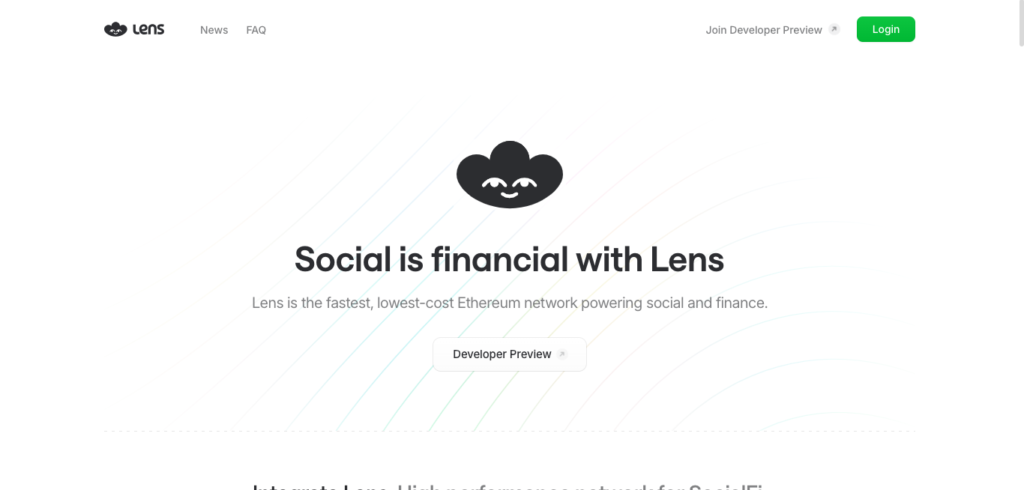
Lens Protocol
Lens Protocol, created by the team behind Aave, is a revolutionary blockchain-based social graph that’s all about giving users control. It lets developers build social apps where people actually own their profiles, posts, and interactions instead of having them locked in centralized platforms. The idea is to break away from the traditional social media model where your content is controlled by big corporations. With Lens, you own everything you create, share, and engage with.
Key Features:
Modular Profiles as NFTs: Lens allows users to create profiles that are linked to NFTs. This gives users true ownership and the ability to take their profiles across different platforms, no matter where they go.
Seamless Interoperability: Apps built on the Lens Protocol can communicate with each other without friction. This means your profile, content, and interactions can seamlessly move between various decentralized social apps, creating a more connected and user-centric experience.
Token-Based Monetization: Users can earn rewards for their engagement and content. Lens lets creators monetize their work through NFT sales and other tokenized mechanisms, which helps them build sustainable communities.
Real-World Use Cases
Lens is a game changer for creators and influencers looking to get paid directly for their content. For example, creators can sell their posts as NFTs, allowing their fans to buy, trade, and collect content. Beyond that, tokenized communities can thrive, where members can support creators through tokens or gain access to exclusive content. This creates a more equitable and rewarding relationship between content creators and their followers, all while maintaining user privacy and control.
Farcaster

What Sets Farcaster Apart:
Farcaster stands out in the world of decentralized social networks because it’s built as an open protocol that’s all about composability. Essentially, it’s designed to let developers easily build and integrate new apps on top of it. This makes it super flexible and developer-friendly, giving them the tools to create social apps that are interconnected and can evolve in ways traditional social networks can’t. Farcaster’s focus on composability also means that users aren’t locked into one app — they can seamlessly switch between different applications that are built on the same protocol, all while retaining control of their data and identities.
Privacy and Censorship Resistance:
One of the coolest things about Farcaster is that it puts privacy and censorship resistance front and center. Users have complete ownership of their accounts, meaning they control their content, their data, and their interactions. Because the protocol is open, no single entity has the power to censor or block users, unlike centralized platforms. If you want to move between different apps or platforms built on Farcaster, you can do so without losing any of your connections or content. It’s a true embodiment of user freedom, where the control is always in your hands — no middlemen, no gatekeepers.
Bluesky (AT Protocol)
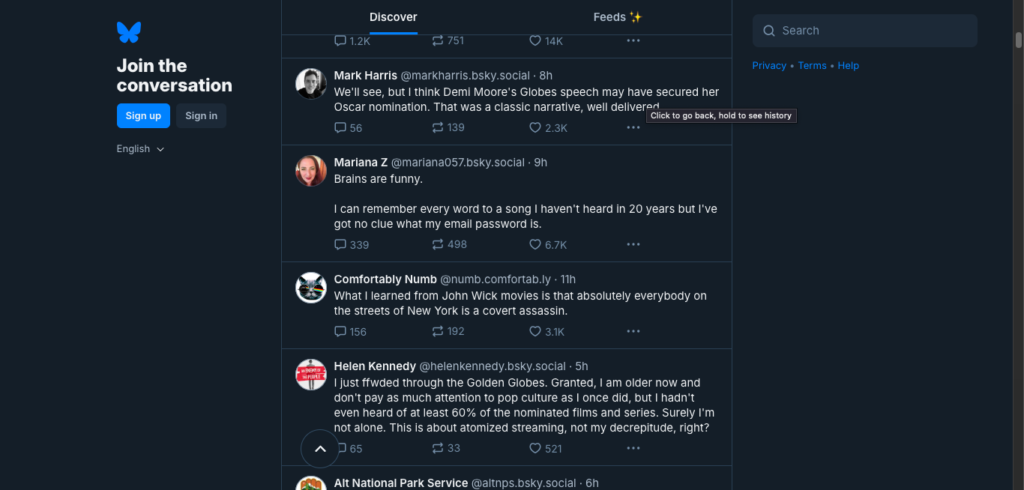
The Push for Open and Federated Social Media:
Bluesky is on a mission to reshape the future of social media by pushing for a decentralized and open internet. Built on the AT Protocol, Bluesky is all about empowering users to take control of their feeds and the content they engage with. Instead of the typical one-size-fits-all experience you get on centralized platforms, Bluesky allows for a more customized, user-driven approach. The idea is to create a federated network of social media apps that work together but are still independent, so users aren’t trapped in a walled garden. This way, you own your data, and your interactions aren’t controlled by one big company deciding what you see or who can see you.
Challenges:
While the vision is bold, Bluesky does face some hurdles along the way. One of the biggest challenges is scaling user adoption. Right now, most people are still used to the convenience and familiarity of traditional social media giants, so getting them to make the switch to a decentralized platform can be tough. Plus, Bluesky still has a long way to go in terms of achieving feature parity with mainstream platforms like Twitter or Facebook. While it offers a unique, open approach, it’s still playing catch-up in terms of features and mainstream appeal. But the vision for an open, user-controlled internet is something that could really transform the way we experience social media in the future — it’s just going to take some time to build that momentum and make it a true alternative for everyday users.
Other Notable Projects
- Mastodon: A federated social network popular among privacy advocates.
- DeSo: A blockchain specifically designed for social applications.
- friend.tech: Initially promising but struggled with retention and technical scalability.
Addressing Censorship and Privacy Concerns
How Decentralization Prevents Censorship:
One of the biggest issues with traditional social media platforms is censorship. A central authority, like a company or government, can decide to take down content or even ban accounts for reasons that may not always align with fairness or free speech. Decentralization solves this by distributing control across a network. In blockchain-based systems, there’s no single entity holding all the power, so no one can just randomly suppress content. For example, with platforms like Lens Protocol, your profile and content are tied to a decentralized network, meaning there’s no central authority that can simply ban your account without the community’s agreement. This gives users more freedom and protects them from unfair censorship, ensuring content remains accessible as long as it complies with community standards.
Zero-Knowledge Proofs and Privacy Protocols:
Privacy is another critical concern in the digital age. Many online platforms require users to give up sensitive personal information just to use their services. But with the rise of privacy-focused technologies like zk-SNARKs (Zero-Knowledge Succinct Non-Interactive Arguments of Knowledge), decentralized networks can allow users to prove things about themselves, like their identity or reputation, without ever revealing personal details. This technology essentially lets you “prove” something without disclosing the underlying information, adding an extra layer of security and privacy. For instance, you could prove you’re a verified user without sharing your real name, helping protect your identity while still offering trust and accountability within the network.
Enabling Free Speech with Accountability:
Decentralized platforms are all about fostering free speech, but that doesn’t mean just letting anything fly. Without moderation, things could quickly spiral into chaos. To balance the freedom of speech with accountability, many decentralized platforms use mechanisms like community moderation and reputation systems. These tools allow the community itself to help maintain order, flagging harmful content while still allowing people to express themselves freely. Reputation systems track users’ behavior, rewarding trustworthy participants while discouraging bad actors. This way, people can enjoy open dialogue and free expression, but there’s still a level of accountability to ensure things don’t get out of hand. It’s about finding that sweet spot where everyone feels heard, but no one can just get away with causing harm.
Monetization in Decentralized Social Networks
Empowering Creators with Tokenomics:
One of the biggest advantages of decentralized social networks is that they give creators a way to make money directly from their audience, bypassing the need for middlemen like advertisers or platform owners. Web3 tools like tokens, NFTs, and tipping systems open up new ways for creators to earn. For example, on Lens Protocol, creators can mint their content as NFTs, meaning they can sell their posts, videos, or other creations as unique, collectible digital items. Their followers can then purchase or trade these NFTs, allowing creators to earn revenue from their work in a way that wasn’t possible with traditional social media. It’s a whole new world where content isn’t just shared—it’s also a commodity that can generate income for the creator.
Direct-to-Audience Revenue Models:
In the traditional social media world, creators rely heavily on ads or platforms like YouTube or Instagram to earn money, which often means a big chunk of revenue goes to the platform itself. But in decentralized networks, creators can receive payments directly from their audience. There are no intermediaries taking a cut. For instance, Farcaster allows users to set up subscription models or offer tokenized access to exclusive content. This means that creators can get paid directly by their followers for access to premium content, without relying on ad revenue or corporate partnerships. Whether it’s a monthly subscription or a one-time token payment, these models give creators more control over their income.
Examples of Monetization:
Lens Protocol’s NFT Posts: One great example of how creators can monetize on a decentralized platform is Lens Protocol. Creators can mint their posts as NFTs, which gives them ownership over their content and allows them to sell it to fans or collectors. This turns each post into something that can be bought, sold, and traded, making content creation a potentially more lucrative endeavor.
Farcaster’s Community Token Initiatives: Farcaster takes a different approach by focusing on community-driven tokens. These tokens can be used as a form of currency within the network, allowing creators to reward their audience or sell access to exclusive content or perks. This token-based system ensures creators get paid in a way that’s more direct and connected to their community, fostering stronger relationships between creators and their followers.
In short, decentralized networks are transforming how creators make money online. By cutting out the middlemen and putting more control in the hands of creators, these platforms are offering exciting new ways for people to monetize their work while building closer, more sustainable relationships with their audience.
Challenges Facing Decentralized Social Networks
Adoption Barriers:
One of the biggest hurdles for decentralized social networks is getting mainstream users on board. Many people are still intimidated by blockchain technologies and crypto-related concepts. It’s not always easy to explain to a non-technical user how things like wallets, tokens, or NFTs work. For decentralized platforms to reach a broader audience, they need to make the user experience as smooth and simple as possible. This means improving user interfaces (UI) so they’re more intuitive and reducing the onboarding friction, like complicated wallet setups or confusing technical steps. Platforms need to find a way to make these networks feel as easy to use as the traditional social media platforms people are already familiar with, or else it’ll be a barrier to mass adoption.
Regulatory Challenges:
Another tough issue for decentralized social networks is regulatory challenges. Governments and regulatory bodies often have concerns about platforms that operate outside of centralized control. Without a single entity responsible for content moderation or compliance, governments may feel like they have less control, and this can lead to pushback. For example, Mastodon, a decentralized social media platform, has faced scrutiny for its content moderation approach. Since anyone can create a server (or instance) on Mastodon, there’s no central authority to enforce policies, which has raised questions about how harmful content is managed. Governments may be wary of decentralized networks because they can’t easily impose the same rules or regulations that apply to traditional platforms.
Technical and Scalability Limitations:
Blockchain technology, while incredibly promising, also comes with its own set of technical and scalability limitations. For instance, blockchain networks can struggle with high transaction fees, especially during times of heavy use. This can be a problem for decentralized platforms that rely on blockchain for payments, content creation, or other interactions. Additionally, as these platforms grow, scalability becomes an issue. Blockchain networks may face challenges when it comes to handling large numbers of users and transactions without slowing down or becoming too expensive to operate. Solving these technical issues is essential for decentralized social networks to scale up and support a wider audience without compromising performance.
The Future of Online Communities in Web3
Interoperability Across Platforms:
One of the most exciting things about the future of Web3 and decentralized social networks is interoperability. Imagine being able to seamlessly move between different apps without losing your identity, content, or connections. Platforms like Lens and Farcaster are already leading the way by allowing users to interact across apps built on the same protocol. For example, if you create content on one app built on Lens, you can take it with you when you switch to another app within the Lens ecosystem. This could lead to a more unified and interconnected online experience where users have greater control over their data and interactions. Rather than being locked into one platform, users will be able to freely choose which apps to use while maintaining a consistent identity and experience across the Web3 ecosystem.
The Role of DAOs in Social Governance:
Decentralized Autonomous Organizations (DAOs) will play a major role in how online communities are governed in the Web3 era. DAOs are essentially organizations run by smart contracts on the blockchain, where decisions are made collectively by the community rather than a centralized authority. This means that the users themselves have a direct say in how the platform is run, ensuring fairness and transparency. For example, in a decentralized social network, a DAO could help decide on rules for content moderation, platform upgrades, or community initiatives. This gives users a voice in how their platforms are governed, creating a sense of ownership and accountability. DAOs are a way to bring democracy to the digital world, giving everyone a stake in how platforms evolve.
How AI and Decentralized Social Media Can Intersect:
When you think of AI and decentralized social media, it might seem like two separate worlds. But in reality, they can work together in powerful ways. AI can help enhance things like content discovery, moderation, and personalization, making it easier for users to find content they love and for creators to connect with their audience. AI could also help automate content moderation in decentralized networks, helping to flag harmful content without relying on a central authority. What’s special about this in Web3, though, is that these AI tools can be designed in ways that respect privacy. Instead of storing personal data on centralized servers, AI in a decentralized social network could operate directly on the user’s device or using privacy-preserving technologies, like zero-knowledge proofs. This would allow users to enjoy the benefits of AI-driven enhancements without compromising their data or privacy.
Predictions for the Next Decade:
Mainstream Adoption of Decentralized Platforms:
Over the next decade, we expect to see a mainstream adoption of decentralized platforms. As more people become familiar with blockchain and Web3, the idea of decentralized social media will seem less intimidating, and more users will make the switch. The promise of privacy, ownership, and a more user-controlled experience will start to appeal to a broader audience.
Greater Focus on Privacy-Preserving Technologies:
Privacy will continue to be a major focus in Web3. With growing concerns over data breaches and surveillance in the current web landscape, there will be an even greater push for privacy-preserving technologies. This includes tools like zero-knowledge proofs and encryption methods that allow users to maintain control over their personal information without compromising the functionality of social platforms.
Integration with Metaverse Experiences:
We’re also likely to see more integration with the metaverse. Decentralized social platforms will start to intersect with virtual worlds, allowing users to not only interact with content but also experience it in immersive 3D environments. Think of attending virtual events, conferences, or concerts in the metaverse, where your digital identity and content are seamlessly integrated across both the social media platform and the virtual world. This could blur the lines between traditional social media, gaming, and the virtual experiences of tomorrow.
Conclusion
Why Decentralized Social Networks Are the Future
Traditional social media platforms have been facing growing criticism for their issues around privacy, censorship, and centralized control. Users and creators alike are starting to realize the limitations of these platforms—where their data is often monetized, and decisions about content and access are made behind closed doors. As these flaws become more obvious, decentralized alternatives are stepping up to offer better solutions. Decentralized social networks empower users by giving them control over their data, freedom to express themselves, and direct ways to earn from their content without relying on middlemen. These platforms are built on the idea of user ownership, where individuals can fully participate in shaping their online experiences without the fear of unfair moderation or being exploited for personal information. With these improvements, decentralized social networks have the potential to replace traditional ones and offer a better, more user-friendly internet experience.
Encouraging Community-Driven Innovation:
One of the core principles of decentralized platforms is that they thrive on community engagement. These platforms aren’t just built for users—they’re built by users. When a new idea or feature is needed, the community can come together to brainstorm, vote, and collaborate on solutions. This creates a truly innovative environment where improvements come from the ground up, and everyone has a voice. Unlike centralized platforms where decisions are made by a few people at the top, decentralized platforms encourage everyone to get involved. Whether it’s creating new features, developing content, or managing governance, the community has the power to shape the platform in a way that benefits everyone. This collective approach fosters creativity, growth, and a sense of ownership, driving the development of new, exciting technologies.
Final Thoughts on Web3’s Potential to Reshape Social Media
Web3 is more than just a technological shift—it’s a societal transformation. The move towards decentralized social networks is about more than just adopting new tech; it’s about creating a more equitable, transparent, and open internet. With Web3, users are no longer at the mercy of giant corporations that control their data and content. Instead, they have the power to own their identity, control their data, and participate in the creation and growth of platforms they use. Decentralized social networks bring us closer to a future where the internet is more democratic, where creators can earn from their work without exploitation, and where privacy is respected. It’s an exciting time for the Web3 movement, and as these technologies continue to evolve, they have the potential to completely reshape the way we connect, communicate, and share on the internet. The shift to decentralized platforms isn’t just about making things better for users—it’s about building a whole new internet that works for everyone
